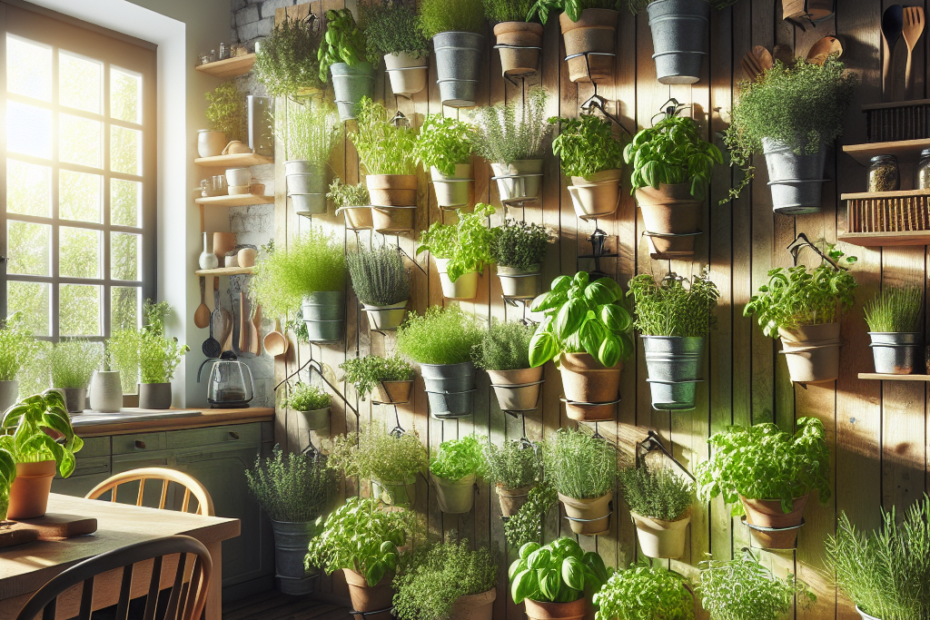Create a DIY Herb Garden Wall for Your Kitchen
They often find themselves spending lots of time in the kitchen, cooking meals and trying new recipes. Having fresh herbs on hand can make their dishes even tastier. What better way to keep fresh herbs than by creating a DIY herb garden wall? It not only adds greenery to their home but also ensures they always have access to fresh herbs right when they need them.
Why a DIY Herb Garden Wall?
Many people opt for a DIY herb garden wall because it is cost-effective and customizable. According to the National Gardening Association, 35% of American households grow some form of food at home, with many choosing herbs for their ease of growth and utility in cooking. Adding a DIY herb garden wall to their kitchen allows them to use vertical space efficiently and brings nature indoors, which can improve indoor air quality.
Materials Needed
| Item | Description |
|---|---|
| Wooden pallets or shelves | To mount herbs on the wall |
| Pots or containers | To hold the herb plants |
| Soil mix | Specially for indoor herbs |
| Herb seedlings | Basil, parsley, mint, etc. |
| Wall brackets | To securely fix shelves |
| Watering can | For regular watering |
| Drill and screws | For installation |
Setting Up Your DIY Herb Garden Wall
They need to choose a suitable spot in their kitchen. A sunny wall is ideal because most herbs thrive with 6-8 hours of sunlight. They can then follow these steps:
- Install the Shelves: Use a drill and screws to mount the wooden pallets or shelves securely on the wall using wall brackets.
- Prepare the Containers: Fill the pots with the soil mix, ensuring each has drainage at the bottom.
- Plant the Herbs: Place the herb seedlings in the pots, covering their roots with soil. Be sure to label the pots for easy identification.
- Arrange on Shelves: Neatly place the potted herbs on the installed shelves.
- Water and Care: Water the herbs regularly, ensuring the soil remains moist but not waterlogged.
Best Herbs for a Kitchen Garden Wall
While many herbs can be grown on a kitchen wall, some are especially well-suited for indoor growth. They should consider starting with:
- Basil: Perfect for Italian dishes, basil needs a lot of sunlight.
- Mint: Useful in beverages and desserts, mint is easy to grow.
- Parsley: Great for garnishes, parsley does well with moderate sunlight.
- Thyme: Versatile in cooking, thyme is also forgiving to slight neglect.
- Cilantro: Essential for many cuisines, cilantro grows quickly.
Benefits of a DIY Herb Garden Wall
Creating a DIY herb garden wall offers multiple benefits. According to a study by the University of Michigan, having plants indoors can increase productivity by up to 15%. Besides, growing herbs at home ensures they have fresh, pesticide-free produce. It’s an eco-friendly choice that reduces food miles and packaging waste. Finally, working with plants can reduce stress and improve their overall well-being.
Key Takeaways
- A DIY herb garden wall is a space-efficient way to grow fresh herbs indoors.
- They need materials like wooden pallets, pots, soil, and herb seedlings.
- Popular herbs for such gardens include basil, mint, parsley, thyme, and cilantro.
- Indoor plants can improve air quality and enhance mood.
FAQs
- What is the best location for an herb garden wall in the kitchen?
A sunny spot that receives 6-8 hours of sunlight is ideal.
- Can they grow herbs indoors all year round?
Yes, with proper care and lighting, herbs can be grown indoors throughout the year.
- How often should they water the herbs?
Water when the top inch of soil feels dry. Avoid overwatering to prevent root rot.
- Do they need special soil for herbs?
Herbs thrive in well-draining soil. A mix designed for indoor plants works well.
- How can they ensure their herb garden wall remains pest-free?
Regularly check for pests and use natural remedies like neem oil if needed.
